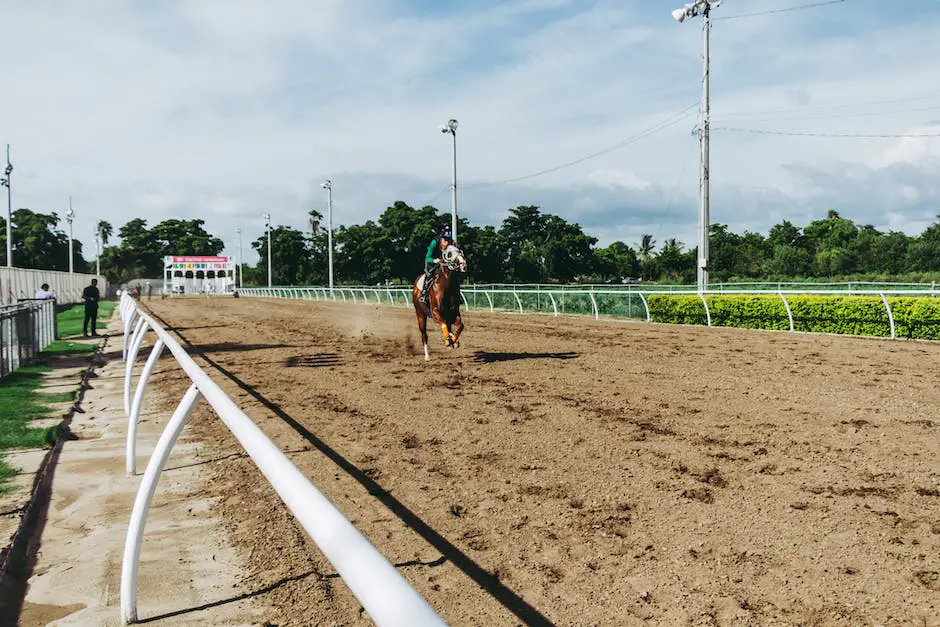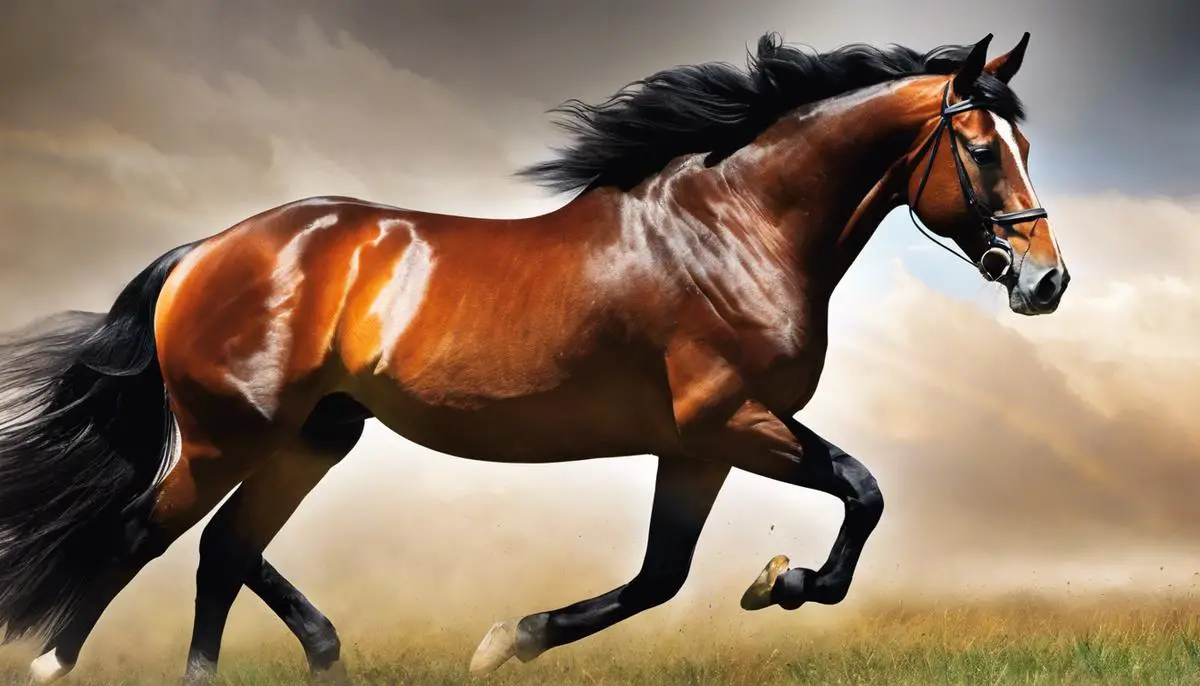Warmblood horses, renowned for their prowess in sport and their distinctive lineage, have a rich history that extends across continents and centuries. Their origin is a fascinating journey that starts from various places worldwide and culminates in a breed known for strength, grace, and versatility. The study of their breeding bestows a unique perspective on our understanding not only of equine evolution but also societal shifts in ‘usefulness’, from martial utility to agricultural work, finally landing the Warmblood squarely in the pantheon of equestrian sports. Complemented by an exploration of famous studbooks and individual horses that have rooted their mark indelibly onto history, the tale of the Warmblood is one of purposeful evolution, careful cultivation and admirable achievements. In understanding the modern Warmblood, we are also tracing the lines of a history filled with passion, precision, and an abiding love for equine athleticism and companionship.
Table of Contents (Horspedia)
The Origin of Warmbloods
The Fascinating Origin Story of Warmblood Horses: A Journey Through Time and Nations
Delving into the historical tapestry of horse breeds reveals several extraordinary chapters filled with fascinating stories. Among these riveting tales is the origin of the Warmblood horse, recognized for its robust build, athletic abilities, and vivacious temperament.
Warmblood horses are not exactly a breed but rather a group of middle-weight horse types and breeds, originally hailing from the geographical heart of Europe. Known for their strength and versatility, Warmblood horses have a rich heritage that spans across Germany, the Netherlands, France, and Scandinavia. So, let’s gallop back in time and explore the thrilling journey these horses have made throughout history.
The inception of Warmblood horses can be traced all the way back to the middle ages. At the root of their evolutionary tree seem to be large, sturdy, and tireless working horses of European origin, bred by farmers and laborers for agriculture and transportation tasks. It was then that these warmbloods began to take on distinct characteristics based on geographic location and varying breeding styles.
In the late 19th and early 20th centuries, cavalry needs and the advent of industrialization signaled a significant transition in the purpose of horse breeding. The lofty, draft-type working horses began to be crossed with Thoroughbreds and Arabians, thus giving rise to the modern Warmblood varieties. This noticeable shift was primarily orchestrated in Germany and the Netherlands, with the aim of producing a more agile, fast, and train-friendly horse suitable for contemporary demands.
The foundation of studbooks in Europe and the organized breeding programs it resulted in contributed significantly to the evolution of Warmbloods. Notably, studbooks such as the Trakehner, Hanoverian, Holsteiner, and Dutch Warmblood have meticulously documented the lineage and characteristics of generations of these horses, creating invaluable resources for breeders and enthusiasts worldwide.
Germany has long held its position as a crucial country influencing Warmblood development, with breeds including the Hanoverian, Oldenburg, and Westphalian. Each of these German Warmbloods has its distinct set of traits, primarily shaped by the selective, performance-focused breeding practices in Germany.
The Netherlands, too, has made considerable contributions to the Warmblood legacy, giving birth to eminent breeds such as the Dutch Warmblood and the Gelderlander. Again, selective breeding here aimed to refine endurance, matchless speed, and overall athletic prowess.
Scandinavian lands of Sweden and Denmark have also partaken in this journey, sculpting breeds like the Swedish Warmblood and the Danish Warmblood, characterized by their adaptability and unrivaled equestrian performance.
France, with its celebrated Selle Français, entered the Warmblood scene a little later, but contributed substantially to the elegantly balanced and amicably temperamental Warmbloods we admire today.
Warmblood horses truly embody a rich history of careful selection, meticulous breeding, and undeniable passion. Over time, they have evolved to excel at dressage, show jumping, eventing, and driving, and they have emerged as a favorite among equestrians and horse lovers alike. Examining their journey from commonplace working horses to the athletic, diverse, and celebrated group of breeds they are today is nothing short of a thrilling gallop through time and across nations.

The Development of Warmblood Breeding
Continuing our exploration of the Warmblood’s history, it’s a great time to delve into how these marvelous creatures transitioned from being primary utility horses to true athletes, remarkable for their versatility. This shift was heavily influenced by the changes in human demands and technological advancements across the centuries.
In the decades following the Industrial Revolution, machinery began to replace horses in agriculture and transportation. This led to a decline in their utility function leading breeders to gradually orient their breeding programs towards producing light riding horses instead of heavy workhorses. This process was significantly accelerated during the 20th century with the increasing popularity of equestrian sport.
The 20th century also saw further refinement in Warmblood breeding. Each breed has its own studbook, governed by breeding societies which control breed standards and maintain detailed records. These studbooks played a significant role in enhancing the athletic abilities of Warmblood breeds by promoting selective breeding. Bestowed with an athletic build, Warmbloods started dominating in equestrian sports, hence resulting in growing demand for these equine breed.
The main breeding aim has always been to produce a horse with a reliable temperament, elegant movement, and a well-proportioned physique that adapts to the changing needs of horse enthusiasts, be it for dressage, show jumping, or leisure riding. This approach has been vastly successful as evidenced by the numerous victories Warmbloods have scored in international competitions.
The introduction of deep frozen semen in the 1980s had a transformative effect on Warmblood breeding. Gary Kehl, a prominent breeder, is known to have played a pivotal role in this era by acquiring top-quality mares to create balanced gene pools. He also made great strides in modernizing the import of European sperms to America, making it easier to access valuable genetics to better breed the Warmbloods in the United States.
Furthermore, advances in genetic research in recent decades have lent breeders a more refined tool for selective breeding. By understanding the genetic profile of prospective breeding pairs, breeders can now make more informed decisions based on a multitude of genetic markers, ranging from disease resistance to specific performance traits.
Although Warmblood horses’ charm lies in their history, they continue to be a work in progress, a beautiful concoction of careful selection, time, and a passion for excellence. They are a testament to the depth of human-equine relationships, a rich legacy that spans centuries and resonates with generations of horse lovers. And while one might say that breeding is an art, Warmblood horses are, without a doubt, one of its most beautiful masterpieces.

Famous Warmblood Horses and Studbooks
Diving deeper,
it’s exciting to reflect upon some of the most notable Warmblood horses that have made a significant impact in equestrian sport. Famously, Totilas, a Dutch Warmblood held the world record for highest ever score in Grand Prix dressage until 2014.Trained by Edward Gal, Totilas seared the competition arena with an unprecedented athleticism and beauty that still reverberates in the equestrian world.
Another name that deserves mention is Rembrandt, another Dutch Warmblood. Rider Nicole Uphoff brought out this extraordinary horse’s talents, earning four Olympic gold medals in dressage. Rembrandt’s balanced movement and harmonious rhythm set a benchmark for dressage performance.
In showjumping, there’s no forgetting Big Star, a KWPN (Dutch Warmblood) stallion. Under the guidance of Nick Skelton, Big Star won gold in the 2012 London Olympics and has been a reference point for showjumpers ever since for his distinct agility and control.
Riding and driving are not the only categories where these breeds make their mark. For example, in Eventing, La Biosthetique-Sam FBW, a German Sport Horse breed (a type of Warmblood) was a marvel. Ridden by Michael Jung, this gelding achieved an unprecedented feat by winning consecutive individual gold medals at the 2012 and 2016 Olympics.
Diving into studbooks, they are a pivotal part of Warmblood breeding. They record ancestry, keep track of performance, and guide breeders towards valuable horse characteristics. They are the cornerstone of the studbook selection system or approval process for stallions and mares, often involving a rigorous evaluation of physique, gaits, and jumping ability.
Several independent Warmblood studbooks exist across Europe. In Germany, we find the Hanoverian, Oldenburg, and Westphalian studbooks. The Dutch have the KWPN for the Dutch Warmblood. In France, the Stud-Book Selle Français is responsible for the Selle Français breed. For Swedish and Danish Warmbloods, their respective national studbooks are guiding forces.
These studbooks, each with their unique criteria, serve as a breeding guide to breeders worldwide. Their registers have consistently produced high-performing athletes in various equestrian sports, continually fueling the Warmbloods’ high status in the equestrian world.
Devotion to the hexadecimal systems, passion for breeding excellence, and a deep love for Warmblood horses connects us all – breeders, riders, and enthusiasts. As we marvel at the grace, power, and versatility these creatures possess, we also reflect on their past and future. So many individuals have poured their hearts into each studbook entry, each training session, and each competition showcasing these beautiful equine souls. Unsurprisingly, they remain our beloved companions, contributing largely to our rich human-equine history.

Photo by hollymandarich on Unsplash
Warmbloods in Sport
With such a rich background and careful cultivation, Warmblood horses have naturally excelled in the arena of equestrian sports. Their success stems not only from their powerful bodies, but their intelligent minds and spirited personalities. As a hobbyist, it becomes a captivating indulgence to delve into details that have shaped these breeds into remarkable athletic beings.
Looking at individual success stories or “superstars” in the equestrian world, Warmblood horses are clearly leading the way. Talk to any dressage enthusiast about top performing horses, and it won’t take long before the names of Totilas and Rembrandt, both Dutch Warmbloods, come up.
Totilas and his rider Edward Gal dominated the Grand Prix dressage scene from 2009 to 2011, setting several world records and aweing crowds with their breathtaking performances. Similarly, Rembrandt, ridden by Nicole Uphoff, was no less of a phenomenon, capturing four Olympic gold medals before retiring.
The KWPN (Dutch Warmblood) stallion Big Star is another shining example in the field of show jumping. Under Nick Skelton, Big Star played a crucial role in securing the gold for its team in the 2012 London Olympics and bagging the individual gold medal at the Rio Olympics in 2016.
In eventing, the German Sport Horse breed La Biosthetique-Sam FBW truly exemplifies this excellence, with his rider Michael Jung. Exceptionally reliable, this horse carried Jung to numerous top-place victories, including multiple golds at European championships, world championships and Olympics.
The role of studbooks cannot be overstated when understanding the success of Warmbloods in equestrian sports. Careful selection of stallions and mares with the optimal athletic capabilities, temperaments, and physiques, has ensured the propagation of top-class horses. The many independent Warmblood studbooks in Europe, including Hanoverian, Oldenburg, Westphalian, KWPN, Stud-Book Selle Français, Swedish Warmblood, and Danish Warmblood, each contribute to this success by providing invaluable information to breeders.
The continuous success of Warmblood horses in equestrian sports undoubtedly points to the meticulous efforts, passion, and dedication of the breeders involved. The riders and enthusiasts who love and appreciate these horses also contribute to this legacy by creating avenues for the horses to display their skills and by supporting practices that seek to continually improve the breeds.
In conclusion, Warmbloods’ excellence in equestrian sports is not a coincidence. It’s the product of centuries of selective breeding, focusing on temperamental and physical traits conducive to peak performance in competitive riding. Their achievements underscore the symbiotic relationship between humans and horses, and the extraordinary results of passionate devotion to sound breeding and training practices, shaped over generations. This heritage is being built upon even today, upholding the Warmbloods’ status as the epitome of equine athleticism.

The Modern Warmblood
Ah, the Warmblood – an incredible amalgamation of superior athleticism, remarkable endurance, and impressive temperament. A breed sculpted by time, shaped by necessity, and crafted with relentless pursuit for perfection. Today, let’s delve into the history of these horses and witness how it’s shaped their modern existence.
Unfolding the vibrant tapestry of the Warmblood’s history, we discover that they were initially honed for war. Yes, these graceful equine species once served as battle chargers for European armies. However, the dynamic shift towards industrialization lessened the need for military service and farm work, prompting Warmblood breeders to pivot towards developing elite sport horses.
Take note of the meteoric rise of equestrian sports during the 20th century, which played a pivotal role in this transition. Equestrian sports’ increasing popularity, most notably in the fields of dressage, showjumping, and eventing, became fertile ground for Warmbloods to thrive. Breeders turned their focus to producing horses that matched the athleticism and strength demanded by these events. They sought to enhance elegant movement, well-proportioned physique, and reliable temperament – three exemplary traits sought after in a specialized sport horse.
It’s hard to overestimate the transformative role of modern technologies and advancements in this shift. Specifically, the arrival of deep frozen semen in breeding was truly a game-changer, expanding the gene pool and eliminating geographical barriers. Around the same time, American breeder Gary Kehl played a crucial role in bringing this technologically advanced practice into favor, thereby modernizing the import of European sperms to America.
Spanning further forward into the timeline, we find that today’s Warmbloods can thank their stature and reputation to the continuous advances in genetic research. Aided by DNA mapping and genetic profiling, breeders can now make informed decisions for selective breeding, further refining and improving the Warmblood’s desirable traits.
What’s captivating about the Warmblood horses is that their evolution is incessant – their breed is always a masterpiece in progress. They’re a living testament to the fervor and dedication of us horse enthusiasts who pour heart into carefully selecting and cherishing these beautiful creatures.
Warmblood horses have some pretty high-profile ambassadors too. Take, for instance, Totilas, a Dutch Warmblood who touched unprecedented heights in Grand Prix dressage. Then, there’s Rembrandt and Big Star, other Dutch Warmbloods with notable achievements in dressage and show jumping, respectively. Not to forget La Biosthetique-Sam FBW of the German Sport Horse breed, known for his accomplishments in Eventing.
Merchant of these horses’ success is undoubtedly the influence of independent Warmblood studbooks in Europe. Building on centuries-old selective breeding practices, they meticulously record the lineage of each horse, ensuring that only the highest quality stallions and mares contribute to the next Warmblood generation.
And so, the tale of Warmblood horses is a saga sung with passion, penned with perseverance, and lived in majestic strides. It’s replete with victories, teamwork, and advancements, encapsulating the very zest of our shared equine love.
Therefore, just as we can’t ignore the timeless legacy of the Warmblood horse, so we must also appreciate everyone who’s loved, nurtured, and led these horses to their ongoing excellence in equestrian sports. For their story is a patchwork of human-equine relationships that span centuries and continents, encompassing a shared pursuit of perfection that’s as universal as it is enduring.
In every sense, from their presence in the paddock to their performance in the arena, Warmbloods epitomize the joyful communion between horse and human, craftsmanship and nature, dream and reality. Their history not only shapes their modern role but also promises an even more exciting future in the world of equestrian sports. So, as we cheer on our favorite Warmbloods, we also honor a breed that embodies tenacity, elegance, and a beautiful evolution driven by the hearts and hands of horse enthusiasts worldwide.

The twenty-first century Warmblood is the result of hundreds of years of careful breeding, intense competition, and high performance across a variety of equine disciplines. They are the embodiments of a journey threading between usefulness and aesthetics, typifying both power and grace. As we look at a modern Warmblood, we observe not only an excellent sport horse, companion, and athlete, but also an embodiment of history. A history that resonates with each powerful stride they take, whether in the dressage arena, over showjumping fences or within the challenging course of eventing. Each victory is not just a celebration of the horse and rider, but also of every breeder, handler, and horse enthusiast, who, over centuries, have passionately engaged in the creation of the magnificent creatures we know and love as Warmbloods today.
